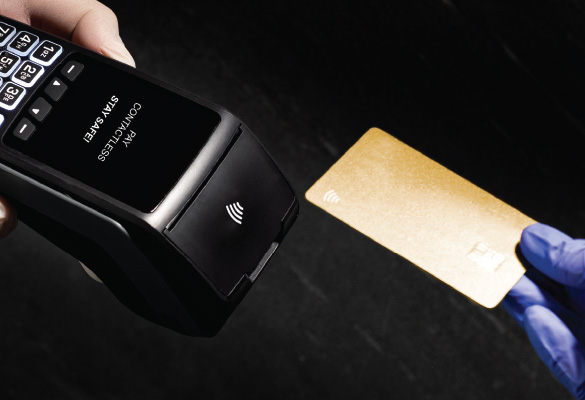The Covid-19 pandemic has accelerated the digitisation of economies across the globe. As the need for social distancing increased in order to contain the infection, digital payments transformed into a daily necessity in many countries. Governments from all around the world introduced or expanded digital financial transfers in response to the severe damage inflicted by the Covid-19 crisis on the economy and livelihoods of people. In this case, government support can help encourage the adoption of digital payments and promote financial inclusion.
It can also provide access to financial services to those who have been excluded due to low connectivity, limited access to handsets and identifications, and low literacy. For example, the World Economic Forum’s (WEF) Trade Facilitation 2.0 Project in Papua, New Guinea is working towards developing advanced digital payments in the country to encourage digital foreign direct investment. But, it is important to remember that digital financial transfers also bring risks, and that must be addressed to ensure their effectiveness and protect users.
Keeping this in mind, leaders from the public and private sectors, including the UN-based Better Than Cash Alliance of more than 75 governments, companies and international organisations who are committed to responsible digital payments to advance the United Nations Sustainable Development Goals (SDGs), convened around the Bill & Melinda Gates Foundation Global Situation Room to develop a quick reference resource based on global good practices for large-scale digital transfers. The resources are built on the Better Than Cash Alliance’s digital payments guidelines to identify short-term and long-term actions to mitigate the risks brought upon by Covid-19.
The rise of digital and cashless payment
Currently, a lot of consumers have been shying away from using cash because of the pandemic. This led to an increase in the use of an online payment gateway in order to protect from the virus. In this case, the best option is to use another payment method such as PayPal. For a lot of consumers, the Covid-19 pandemic has opened them to the possibility of using PayPay and other similar forms of payment. According to an article on CBC News, 80 percent of Canadians are more likely to use e-wallets now than before since it provides a digital payment method that gives consumers the ability to avoid contact with cash and touchscreens.
There are a lot of reasons why cash is not the safest option when it comes to payment, but there are two reasons that stand out the most. Firstly, cash transactions are found to be responsible for transmitting highly contagious infections like Covid-19, influenza, and tuberculosis to name a few. Secondly, we don’t have any way to know who used the currencies before we did. Hence, no matter where or how it has been used, you have no way of knowing if it’s contaminated with germs so going up to a cash register and handing your money over to someone else puts you at risk of catching something.
Smaller businesses are turning towards digital and cashless options
Recently, we have seen a rise in small to medium sized businesses that have stopped using cash as a form of payment. Instead, they have adopted other methods that do not require cash, such as credit cards and PayPal. Additionally, retailers are also using wireless card readers so customers can pay with a debit or credit card at checkout without touching anything. This is much safer option for both the customer and the retailer trying to avoid infection from being transmitted through money or touchscreens. While cashless payments are becoming more and more popular among people, there are still some who prefer not to pay by credit card or any other digital form of payment.
Current leading fintech markets
India is one of the world’s biggest real-time payments market and acts as a yardstick for what’s possible when it comes to the adoption of real-time payment infrastructure. India’s Unified Payments Interface (UPI) is currently the most popular payment method which is leading the already growing digital payments segment in the country, with transactions volumes and values are growing by every passing month. According to the Reserve Bank of India, the digital payments ecosystem in the country has increased at a compounded rate of 55.1 percent over the past 4-5 years, i.e., between, 2016-2020.
In the UK and Europe, a Request to Pay (R2P) approach is the most popular one. R2P drives real-time payments usage through digital form factors which sends a digital request to the payer’s mobile phone usually on a banking application or third-party FinTech application. After this, the payer will either approve or reject the request. Once approved, it will automatically initiate a real-time credit transfer to the payee. Real-time payments have been popular in the UK for nearly 15 years now and experts have predicted that the upward incline will continue till 2023, before levelling off again after 2025.
The US also has R2P on the The Clearing House (TCH) RTP rails, along with Zelle, a person-to-person overlay moving to TCH’s RTP rail. Currently, Zelle is examining how to enable an R2P bill pay experience, so that it can rival Mastercard’s launch of BPX. Additionally, FedEx is currently being piloted by the Federal Reserve and is expected to launch in 2023. Titled FedNow, it will facilitate Peer-to-peer (P2P), Business-to-business (B2B), Business-to-consumer (B2C), Consumer-to-business(C2B) and Government-to-consumer (G2C) payments. FedNow aims to facilitate real-time payment services for all-sized banks in the US, thereby enabling establishments with a wider presence than is possible with the other available networks.
Coming to LatAm, the Brazilian PIX was launched in 2020 that combined both real-time rail and digital overlay capabilities. Brazil’s central government became the first user of this new method, and it is estimated that the volume of transactions in Brazil expanded by almost 50 percent between May 2019 and April 2020. PIX has also enabled Brazil to up its game when it comes to real-time payments. Argentina also has two real-time payment schemes in place; Pago Electrónico Inmediato (PEI), launched in 2016, and DEBIN, both of which were launched in 2017. Since both are still under development, their transaction volumes remain low.
Improving digital payments
While digital payments are becoming more and more popular all over the world, digital financial transfer recipients sometimes experience difficulties accessing the complaints and feedback mechanism systems, or having their problems addressed. In order to solve these problems, governments and cash transfer programmes should set requirements and define responsibilities to address grievances in real-time with financial service providers. These issues might be addressed by regulators through setting and enforcing minimum standards for complaints and feedback channels. Coming from the service provider’s perspective, they could develop feedback and complaints channels that work for low-literacy and inexperienced users and provide services with more gender sensitivity.
It is usually the low income who are the recipients of government benefits and they have limited or no exposure to digital payments. Digital transfer programmes are typically rolled out at a fast speed and this might make it difficult for a number of people to understand, thereby making it challenging. To solve this, governments can partner with business and non-governmental organisations to create education campaigns that specifically target capacity challenges through popular media channels among target groups in local languages.
Another issue that plagues digital payment is lack of identification, especially considering the rural population, who have limited access to information of eligibility criteria and enrollment information. Most rural areas, especially in third world countries have poor connectivity and limited agent network outreach that contributes to excluding people from participating in digital transfer programs.
To address this issue, regulators should ensure that social welfare programmes are inclusive and all information about such programmes are made accessible by all, including the disabled. Governments and companies can leverage open and secure technology and tools established by utility companies, telecom operators and tax registries to conduct more outreach to help people obtain identification and gain access to digital payments.
While digital payments are becoming one of the most convenient modes of payment, there have been quite a few failures too which is stopping it from reaching its full potential. Factors such as poor connectivity, the poor performance of a payment partner’s system, or a mismatch in biometrics/identities all contribute to it. Ideally, digital transfer programmes should collect transaction failure rates as part of daily key performance indicators along with tracking the reason for such failures.
Since most of the transactions among digital transfer program recipients might still require the use of cash, it is important to provide information regarding cash-in and cash-out points. Additionally, government and private sectors should work together to come up with a common platform that maps cash-in and cash-out points across various service providers. It will help priortise locations that need immediate attention for improving outreach and also help providers optimise liquidity levels.
Keeping up with modern demands
From a global perspective, the fintech industry has undergone a massive change and is currently meeting the demands of a modern society. Consumers, along with businesses and institutions now have the expectation to come with the most sleek digital experiences. While global real-time payments innovation caught the attention of the general public just a few years back, the shift towards real-time and digital experiences has grown more than it was estimated, and this will make real-time payment volumes rise dramatically. Experts have mentioned that we will also see the market move its focus away from traditional cards and will adopt a digitally native eal-time, and secure modern payment methods.


